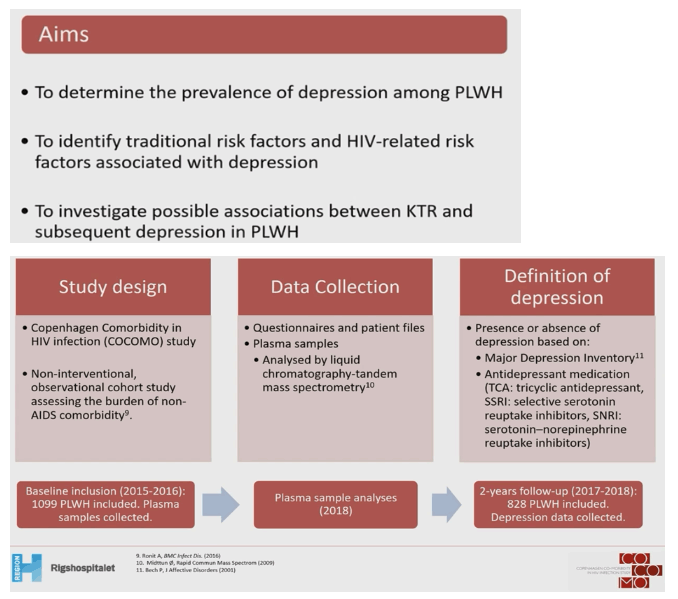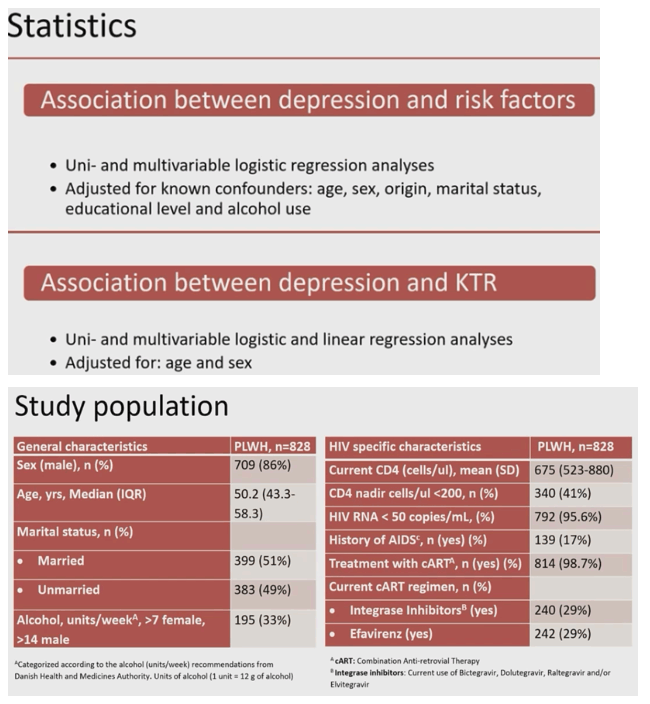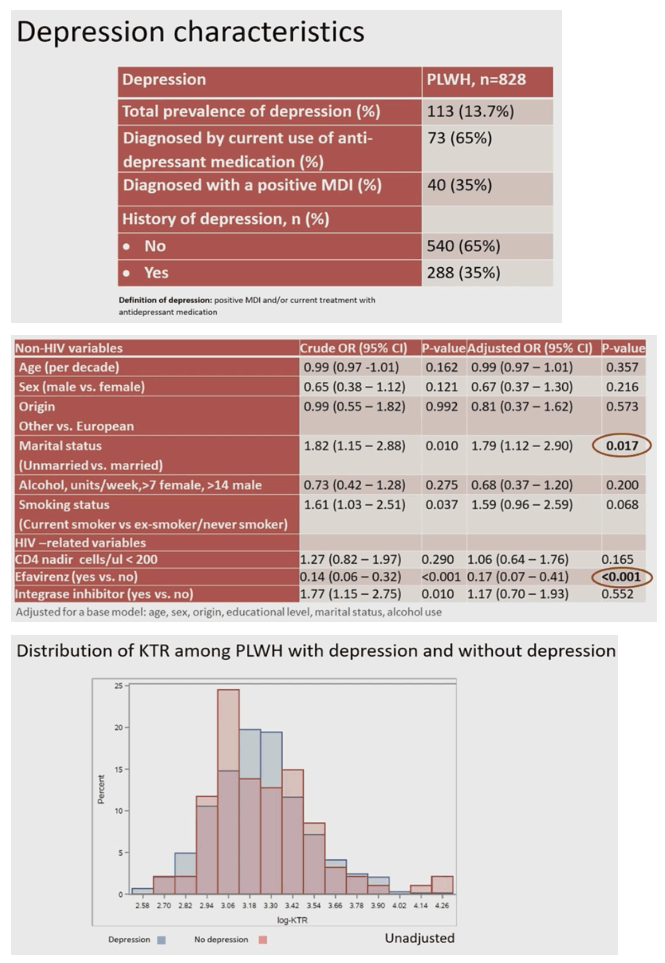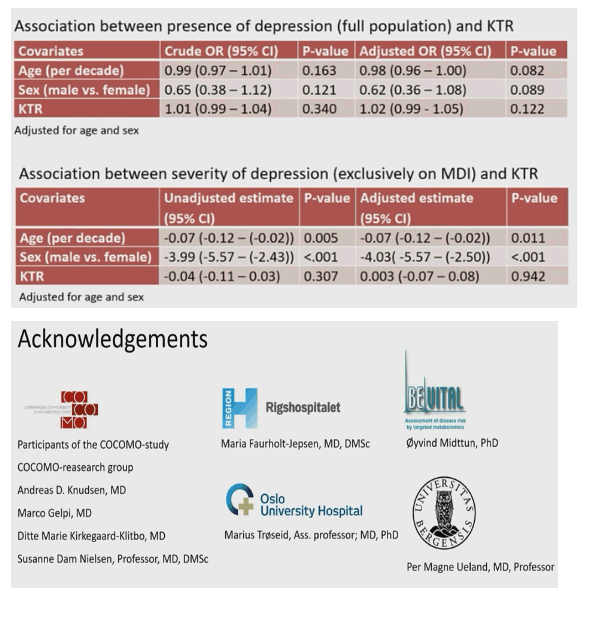 |
 |
 |
| |
Depression and kynurenine/tryptophan ratio in people living with HIV
|
| |
| |
Ninna Drivsholm
EACS 2019
----------------------
in separate study
In the present study, we found well-treated PWH to have increased levels of several kynurenines compared to uninfected controls. Furthermore, in PWH increase in waist-to-hip ratio was associated with a shift from the production of kynurenic acid toward quinolinic acid which, in turn, was associated with increase in markers of systemic inflammation and macrophage activation. Accordingly, we observed a strong association between systemic inflammation and abdominal adipose tissue in the context of HIV infection. Finally, we found that in PWH, kynurenines were associated with lower concentration of circulating lipids, which is in contrast to previous observations in uninfected individuals [19, 26].
------------------------
Program Abstract
Purpose:
Tryptophan is a precursor for serotonin and a higher kynurenine/tryptophan ratio (KTR) has been described in People living with HIV (PLWH) resulting in lower serotonin that may predispose to depression. We aimed to determine the prevalence of depression among PLWH and to identify if KTR as well as traditional and HIV-specific risk factors were associated with depression. We hypothesized that high KTR would be associated with higher risk of depression among PLWH.
Methods:
828PLWH were recruited from the Copenhagen Comorbidity in HIV infection (COCOMO) Study. Demographic information was obtained from questionnaires. Depression was defined using Major Depression Inventory (MDI) and/or current use of antidepressant medication. Plasma kynurenine and tryptophan were analyzed by liquid chromatography-tandem mass spectrometry.
Regression models were adjusted for age, sex, origin, marital status, educational level and alcohol use.
Results:
Population characteristics are presented in table1.Depression was present in 113 (14%) of the participants with a majority having moderate depression (50%). The median KTR was 3.2 versus 3.2 (p=.999) in PLWH without and with depression, respectively. In adjusted analyses, KTR was not associated with presence or severity of depression. Being unmarried was associated with higher risk of depression and current treatment with Efavirenz was associated with lower risk. No other associations were found between depression and traditional and HIV-specific risk factors.
Conclusion:
The prevalence of depression was relatively low in this cohort of predominantly well-treated PLWH compared to previous reports. Being unmarried was and current treatment with Efavirenz were independently associated with higher and lower risk of depression, respectively. KTR and other HIV-specific risk factors were not found to be associated with depression. Our hypothesis that increased KTR would be associated with increased risk of depression was not supported, albeit a low depression prevalence in this cohort may challenge the conduction of a biomarker study.





|
| |
|
 |
 |
|
|